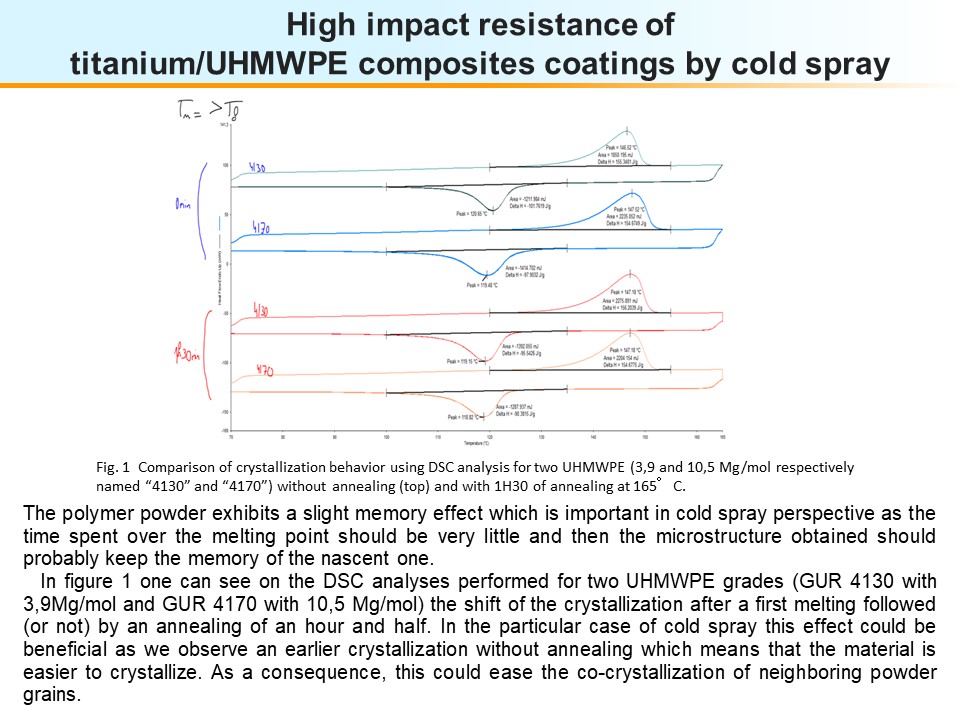Collaborative Research Projects
- Strengthening mechanism of TiC particle reinforced Al matrix composite
- Stability of jet diffusion flames cofiring with carbon-free ammonia
- TATAMI: “Thermal AcTuation and energy hArvesting using MultIphysic alloys”
- Microfluidic Tools to Study Aerotaxis in Eukaryotic Cells
- Coupled computing of fluid-structure interaction problems for multiphase energy systems
- Response Characteristics of Cellulose Nanofibril under AC Electric Field
- Numerical Simulations of Protoplasmic Streaming Interacting with Biological Materials
- Numerical modelling of the particle temperature evolution during cold-spray process
- Multiscale simulation of carbon electromigration in iron
- Stability and Transition to Turbulence of Taylor Vortex in a Gap between Rotating Two Cones
- MAGIC: "Magnetic AGing in ferromagnetIC"
- Active Control of Protein Mass Transfer by Membrane Utilizing Variation of Surrounding Condition
- Ionic Liquid Polymer for corrosion resistance applications
- MACASH (MAgnetostrictive Composites for Application in Sensing and Harvesting)
- 3D simulations of skyrmion instability and mechanism of magnetostriction
- Investigation of a predictive therapeutic response under controlled oxygen condition in cancer patient-derived organoids
- Experimental and Numerical Approaches for Water Film and Particle Flow Analyses(and its Particle Deposition Behavior) for Repairing Leakage Pipes by Cold SprayProcess (or Solid-State Particle Impingement Process)
- Theory for Electrostriction of PolymeRic Actuator (TEmPuRA)
- Modal approach for extracting flow structure related to the subsonic jet noisegeneration
- Corrosion characterization for pipe wall by ultrasonic wave
- High impact resistance of titanium/UHMWPE composites coatings by cold spray
-
Strengthening mechanism of TiC particle reinforced Al matrix composite
Hiroki KURITA
Graduate School of Environmental Studies, Tohoku UniversityThis study investigated the tensile properties of Al-B4C composites prepared by WSM and spark plasma sintering (SPS) and evaluated their microstructures. Compared to pure Al synthesized using the same process, Young's modulus, UTS, and fracture elongation of Al-B4C 10 vol.% composites was increased.
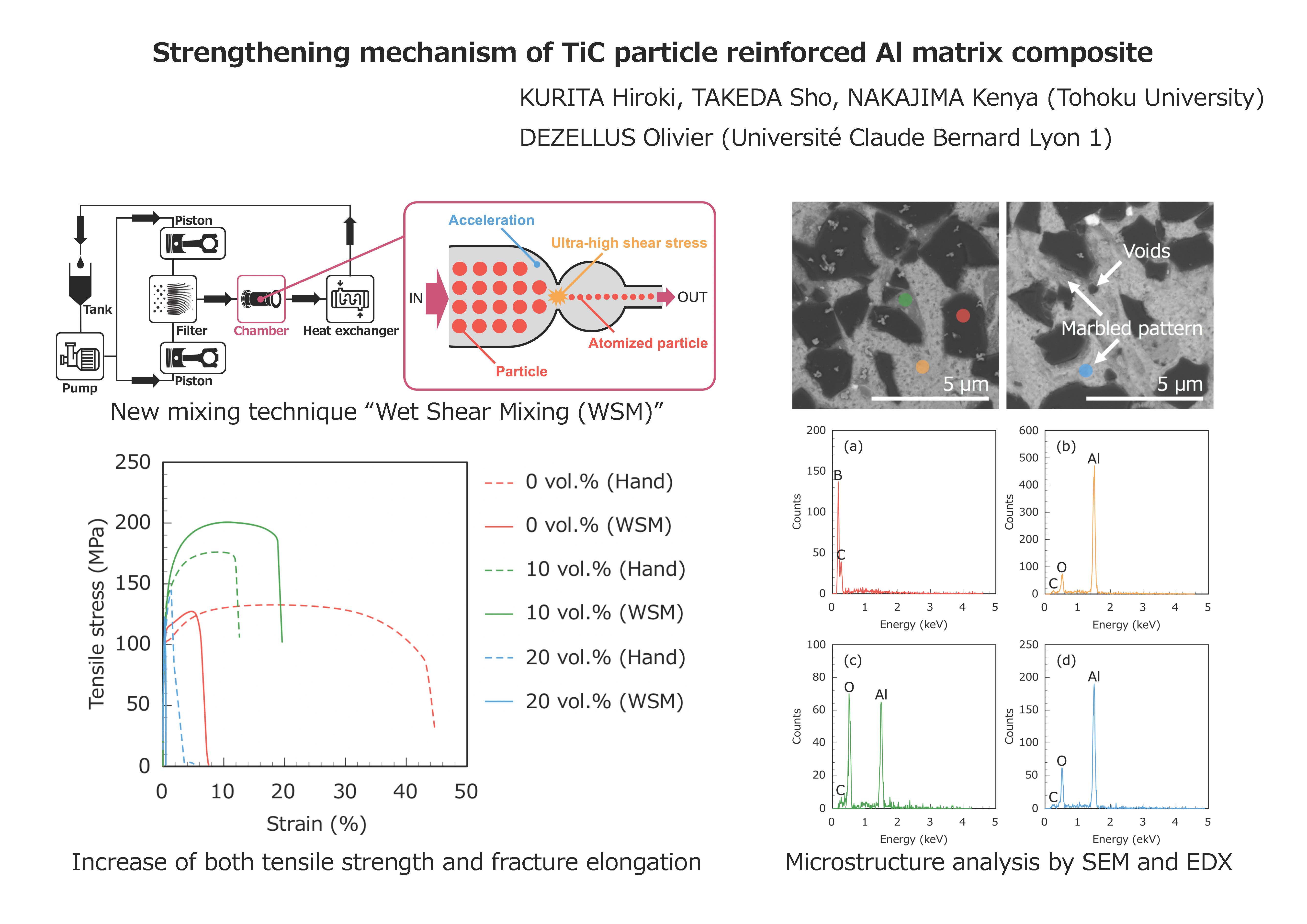
-
Stability of jet diffusion flames cofiring with carbon-free ammonia
Hideaki KOBAYASHI
Institute of Fluid Science, Tohoku UniversityThis study focuses on determining the effects of ammonia addition on a methane non-premixed flame in the context of the use of ammonia as a fuel in the industry. Following an experimental study on the flame stabilization and the interactions between the flame and the burner lip with ammonia addition, numerical modeling of the flame is done to investigate the flame structure and pollutants formation.
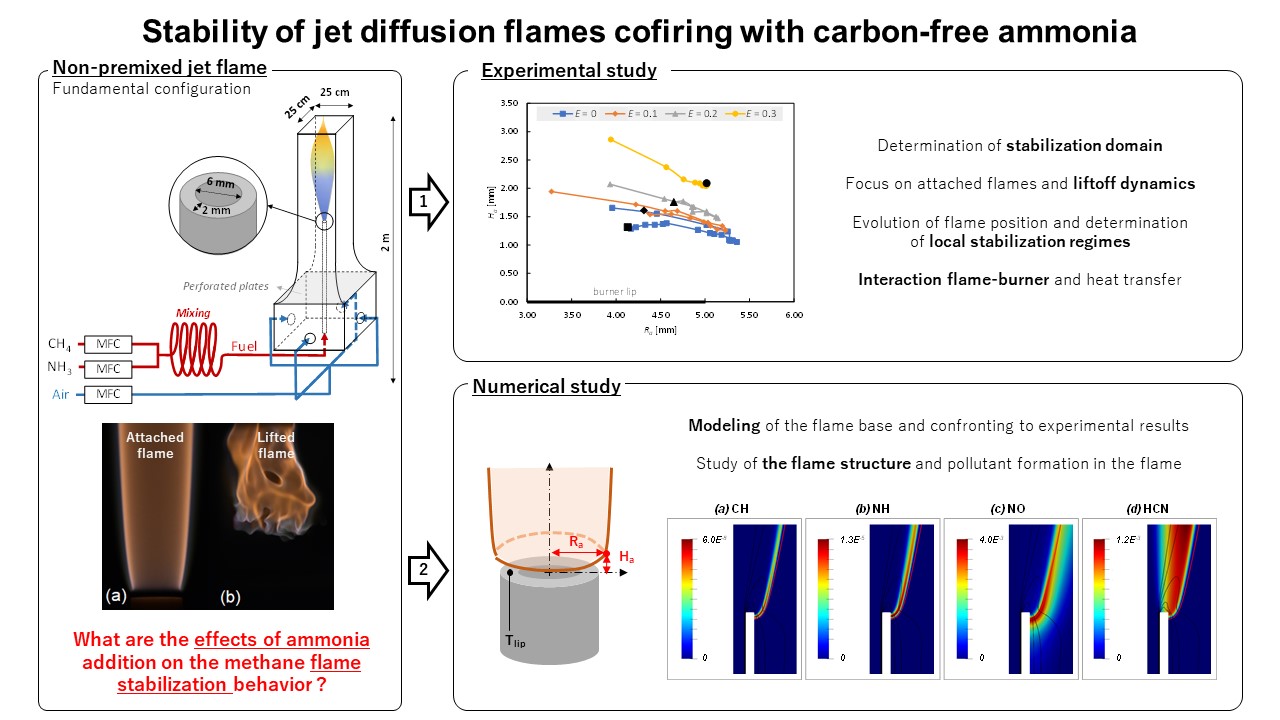
-
TATAMI:"Thermal AcTuation and energy hArvesting using MultIphysic alloys"
Mickael LALLART
INSA LyonTATAMI project aims at investigated Multiphysic coupling materials and their application to energy harvesting devices and small-scale actuators. Thanks to a “material and system by design” approach, novel microgenerators and actuators are developed.
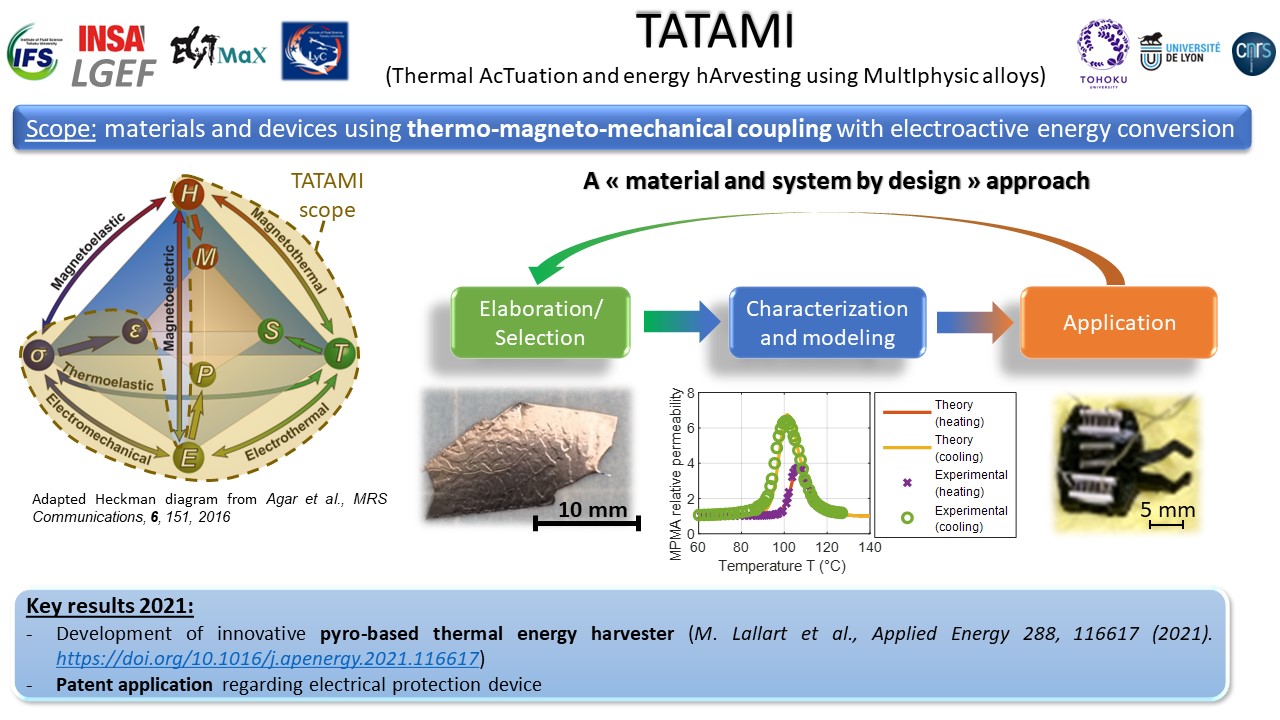
-
Microfluidic Tools to Study Aerotaxis in Eukaryotic Cells
Jean-Paul RIEU
University Claude Bernard Lyon 1We develop microfluidic tools to study directed migration toward oxygen (aerotaxis) and oxygen-dependent active movement (aerokinesis) of eukaryotic cells. Our devices enable a precise control of the oxygen gradient in the 0-21% O2 range. With this device, we measured an exceptionally quick and massive aerotactic and aerokinetic responses of the social amoeba Dictyostelium discoideum. We have confirmed that cells did not aerotaxis at >2% O2 and that they exhibited logarithmic sensing (sensibility to gradC/C) at <2% O2.
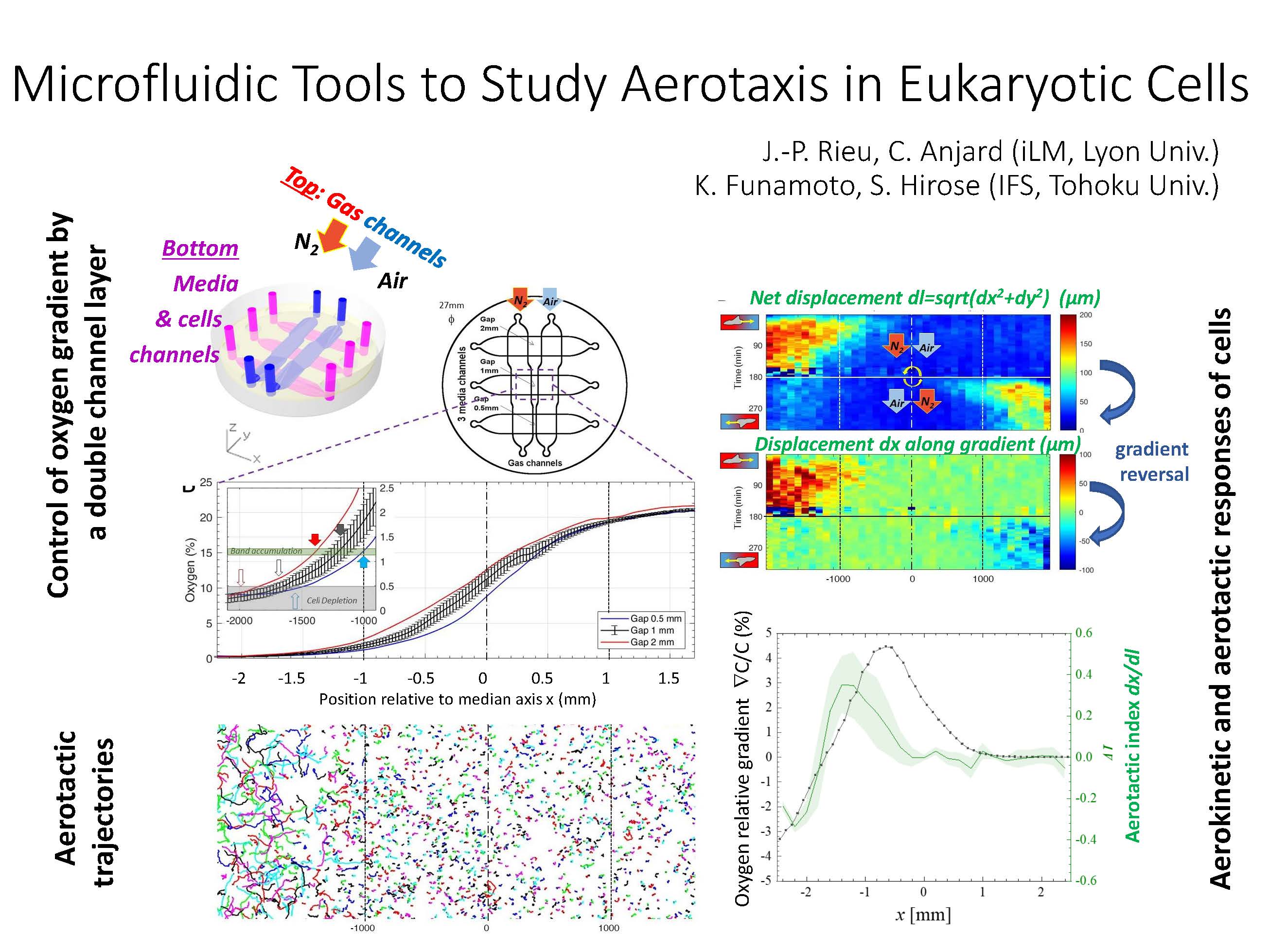
-
Coupled computing of fluid-structure interaction problems for multiphase energy systems
Jun ISHIMOTO
Institute of Fluid Science, Tohoku UniversityThis research focuses on reactive hydrogen leakage due to the fracturing of high-pressure hydrogen tanks to develop a coupled computing method that can simultaneously perform reactive fluid-structure interaction analyses. The integrated computational approach to reactive hydrogen leakage with combustion due to wall crack propagation was implemented using a hybrid of the coupled particle and Eulerian methods. This computational method provides valuable safety information for predicting crack propagation and hydrogen leakage with combustion reaction in pressure tanks as an essential part of assessing hydrogen as an energy vector. As a result, the effect of crack formation and wall boundary conditions on hydrogen turbulent diffusion and concentration distribution and the thermodynamic behavior of the chemical reaction were predicted computationally. It was found that a combustion reaction does not occur near the streamwise axis at the duct center because there is an excess of hydrogen fuel, which increases scalar dissipation, and that the combustion reaction separated into upper and lower regions as it proceeded.
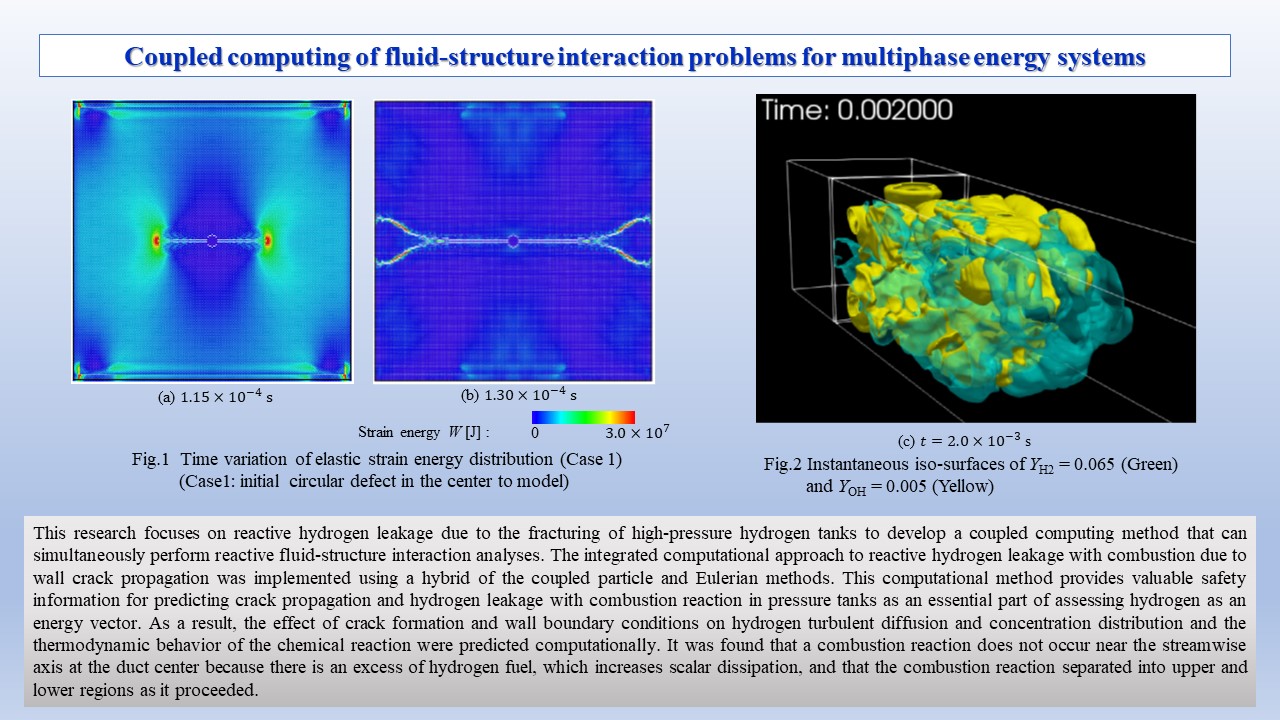
-
Response Characteristics of Cellulose Nanofibril under AC Electric Field
Hidemasa TAKANA
Institute of Fluid Science, Tohoku UniversityThe effect of sheath flow inlet angle on elongational flow field in the flow-focusing channel was clarified for cellulose filament fabrication from cellulose nano-fibrils. The ultimate tensile strength of the fabricated filament increases with flow rate ratio of the second (downstream) sheath flow to the first sheath flow. In the case of 45o inlet angle of the sheath flow, the ultimate tensile strength increases by 11 % as the flow rate ratio increases from 1.0 to 3.0 with creating larger area of higher shear rate along the interface. The single fiber fabrication with assist of electric field will be conducted under the optimized flow rates using the channel with 45o sheath inlet.
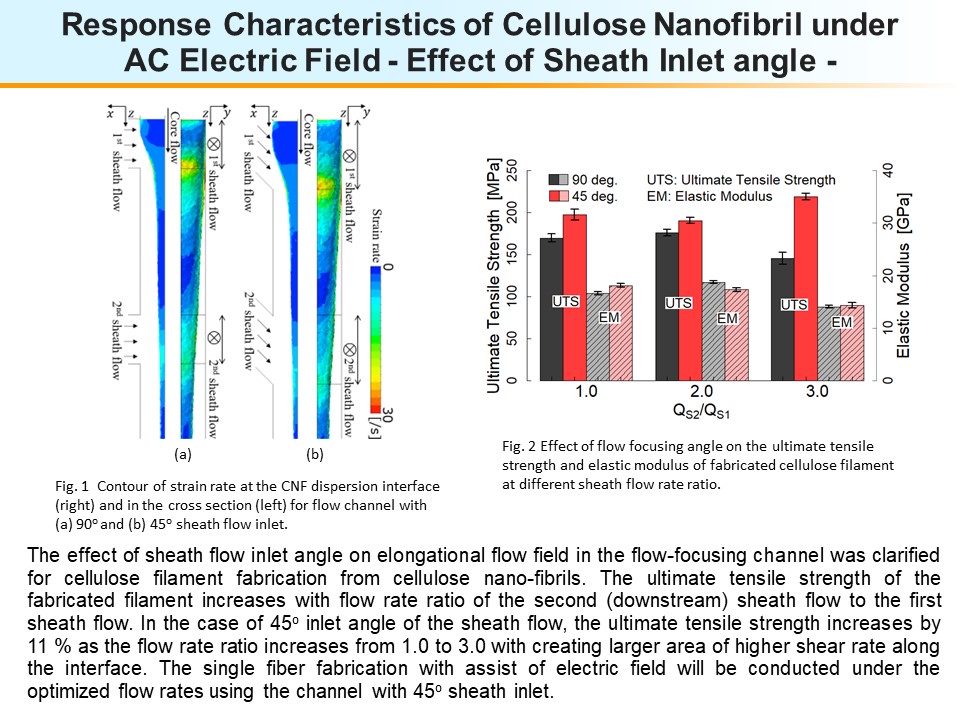
-
Numerical Simulations of Protoplasmic Streaming Interacting with Biological Materials
Shuta NORO
National Institute of Technology, Sendai CollegeWe numerically study the flow field of protoplasmic streaming in plant cells by 3D Langevin-Navier-Stokes simulations. New findings are as follows: (1) The circulation flow of the boundary increases the maximum velocity. (2) This velocity increment, implying an enhancement of the mixing of biological materials, appears only with the existence of the Brownian motion of fluid particles.
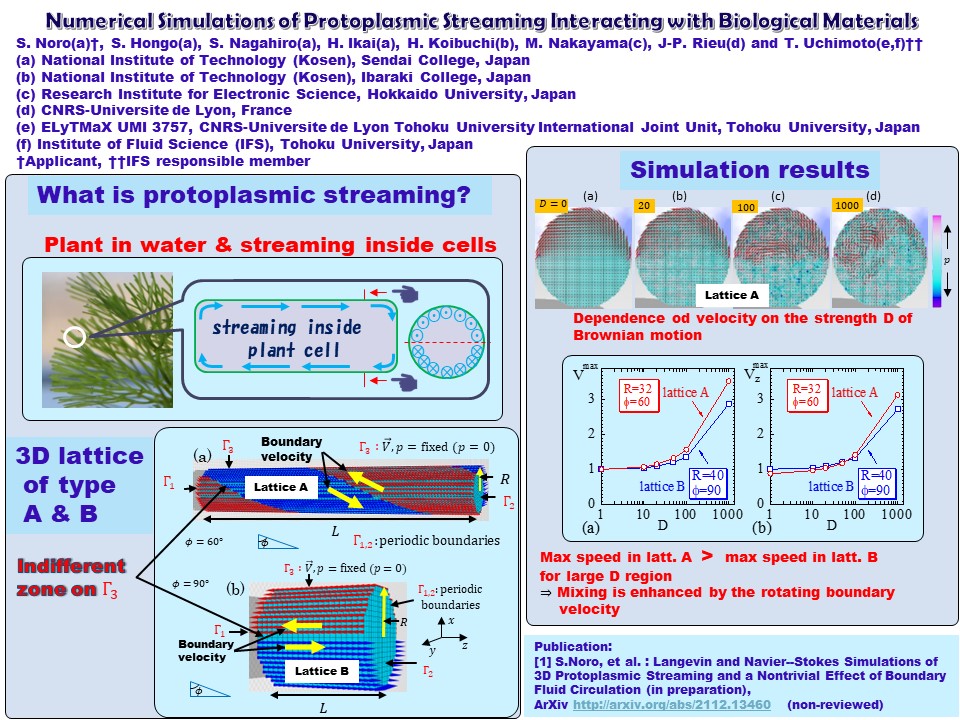
-
Numerical modelling of the particle temperature evolution during cold-spray process
Chrystelle BERNARD
Frontier Research Institute for Interdisciplinary Sciences, Tohoku UniversityDuring low-pressure cold spray, the particle accelerates and sees its temperature increases due to the influence of the sprayed gas. Knowledge of the particle history during its flight is of a primordial importance to better understand the particle impact, in particular for polymers which are highly strain rate and temperature sensitive materials. The thermal gradient of the particle highly depends on the gas input parameters used. In addition, a thermal gradient of at least 60°C is measured inside the particle which is surely non-negligible.
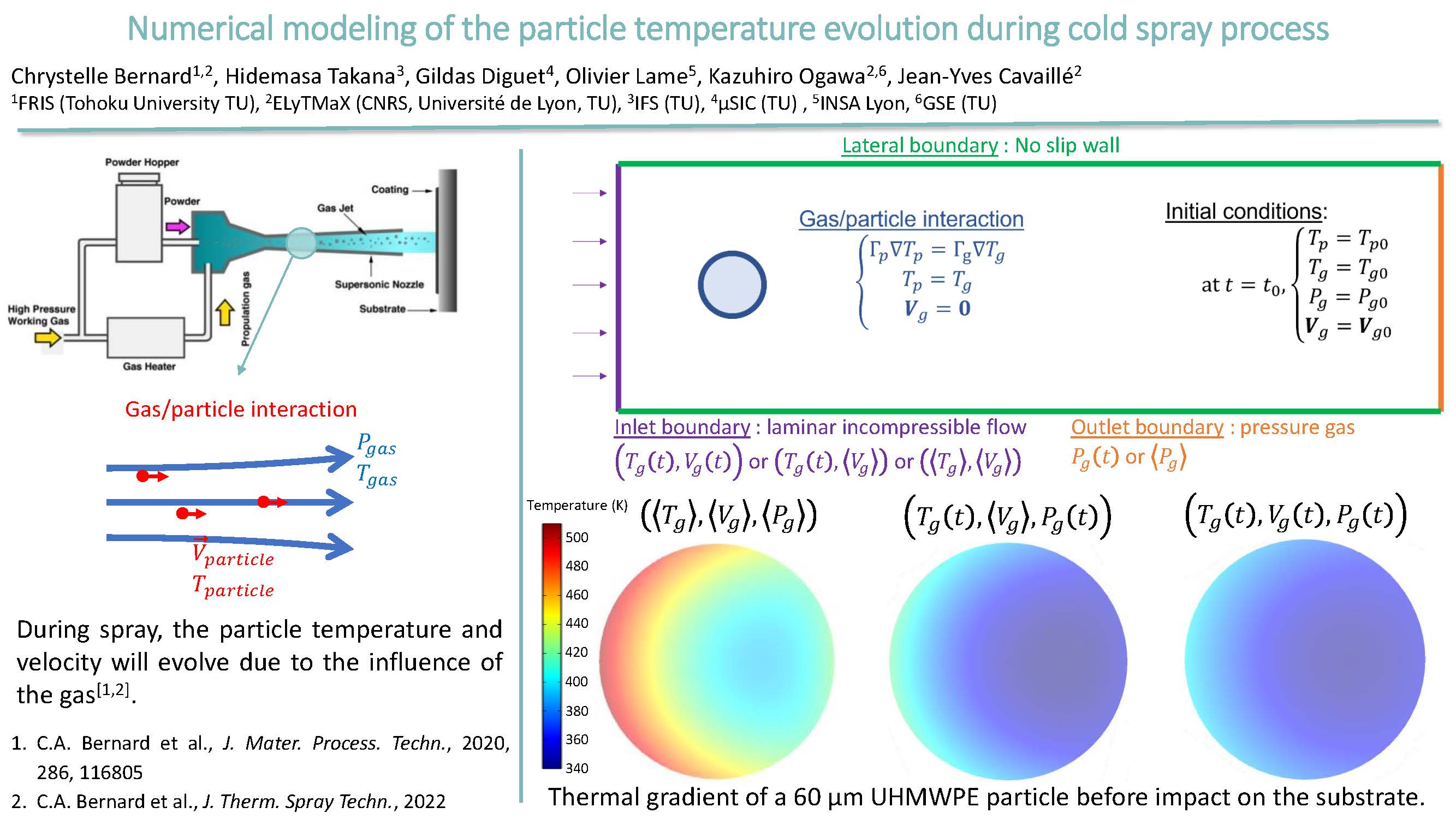
-
Multiscale simulation of carbon electromigration in iron
Takashi TOKUMASU
Institute of Fluid Science, Tohoku UniversityThe purpose of this study is to analyze the relation between carbon diffusion in iron under an electric field and the structure of iron. In this study, we investigated the temperature dependence and electric field dependence of carbon inside iron under an electric field using molecular dynamics simulation. In addition, the free energy of each structure was calculated to determine the stable structure.
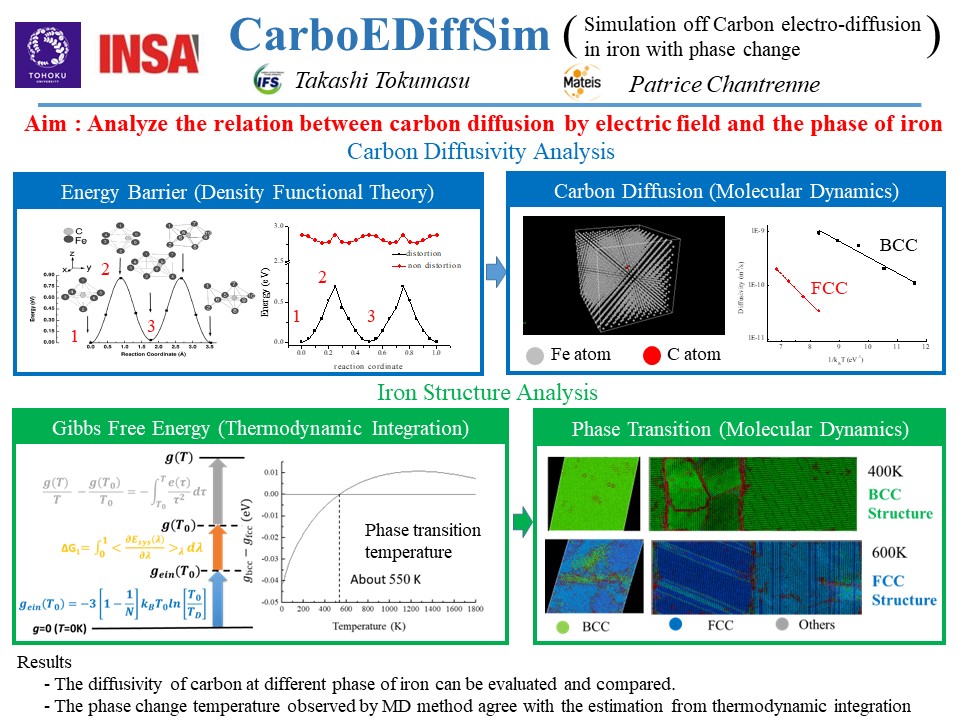
-
Stability and Transition to Turbulence of Taylor Vortex in a Gap between Rotating Two Cones
Takahiro ADACHI
Akita UniversityBy finding a nonlinear equilibrium solution for the transition of Taylor vortices that occur between concentric double cylinders with slopes on the side walls, a global bifurcation diagram can be obtained for several changes in the shape of the flow path with different aspect ratios. When there is a slope, the branch structure differs greatly due to the difference in the radius ratio of the inner and outer cylinders, so it seems that the path to the goal of clarifying the final branch structure is quite long.
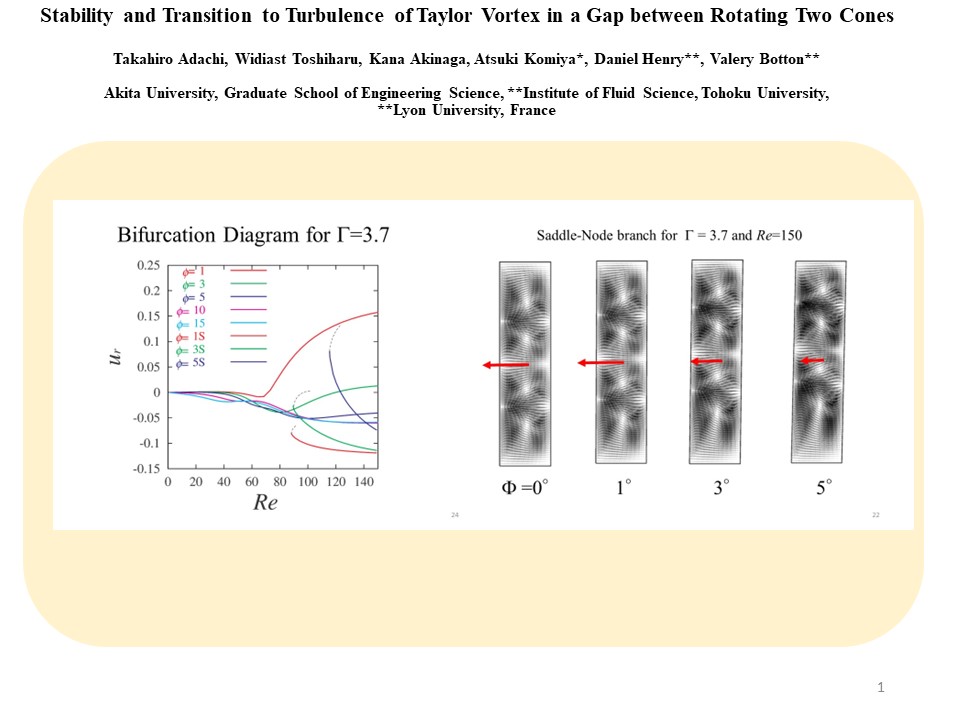
-
MAGIC: "Magnetic AGing in ferromagnetIC"
Benjamin DUCHARNE
INSA LYONMagnetic aging is a major issue of nanocrystalline soft ferromagnetic materials. The relations between the aging process and the magnetization mechanisms are still to be established. We aim at developing experimental situations where the magnetization mechanisms can be isolated and their relationship with aging easier to assess. The first results look promising, but a lot of work is still to be done.
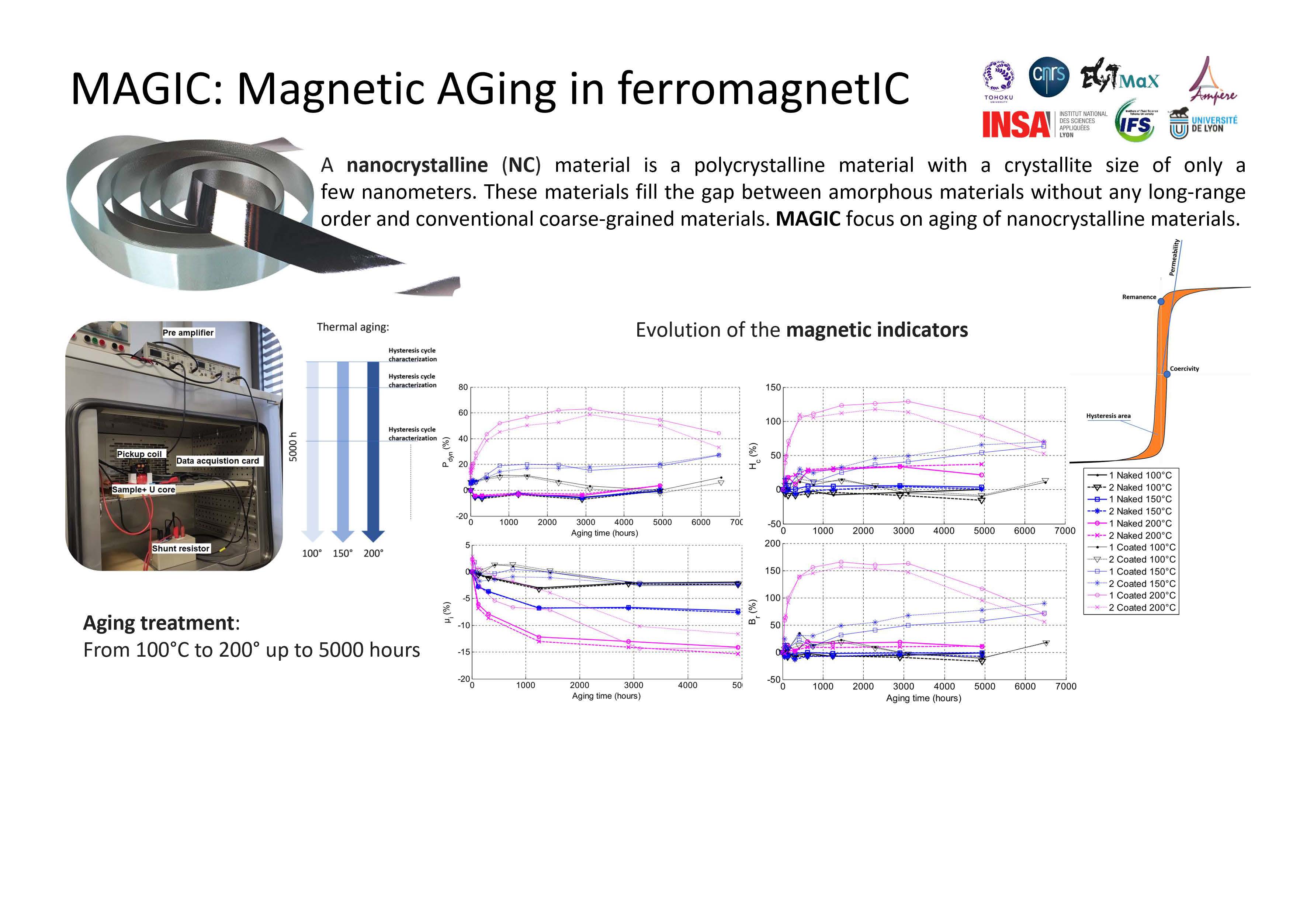
-
Active Control of Protein Mass Transfer by Membrane Utilizing Variation of Surrounding Condition
Atsuki KOMIYA
Institute of Fluid Science, Tohoku UniversityThis collaborative research focuses on the evaluation of the effect of macropore patterning on protein hindered diffusion process. Both numerical and experimental results show that the patterning and configuration controls the mass flux passing through the membrane. It is possible to actively control the protein mass transfer by the membrane.
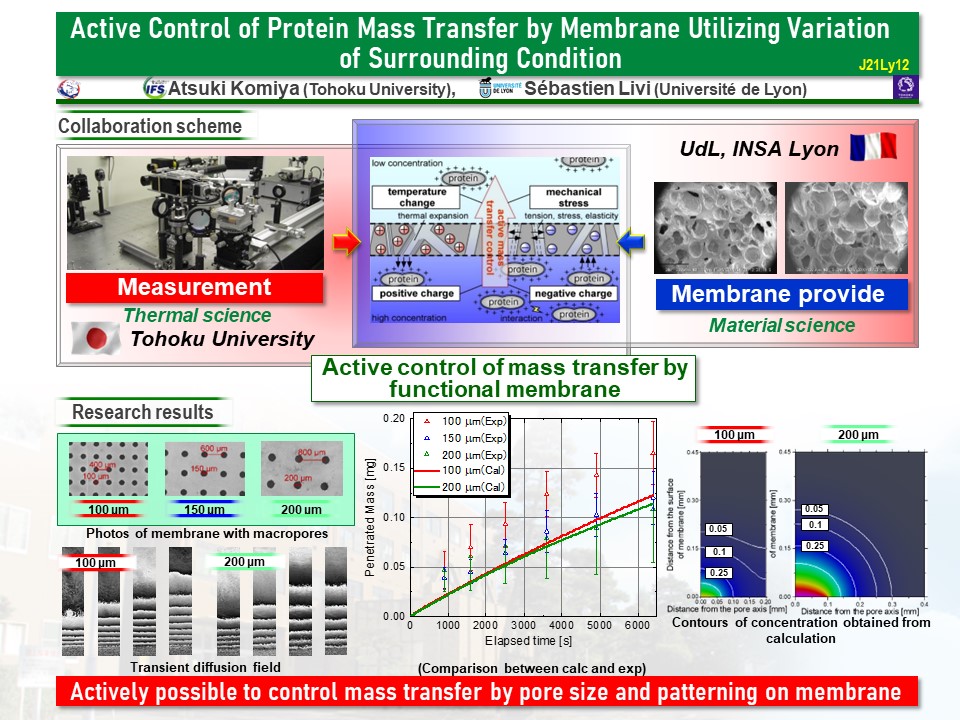
-
Ionic Liquid Polymer for corrosion resistance applications
Nicolas MARY
INSA LyonThe water uptake of a conventional epoxy–amine network was compared to one epoxy initiated by one phosphonium ionic liquid (10 phr). Ionic liquid used as alternative to amine hardener reduces the water uptake: lower diffusion coefficient of water and a lower saturation limit due to the polymer networks.
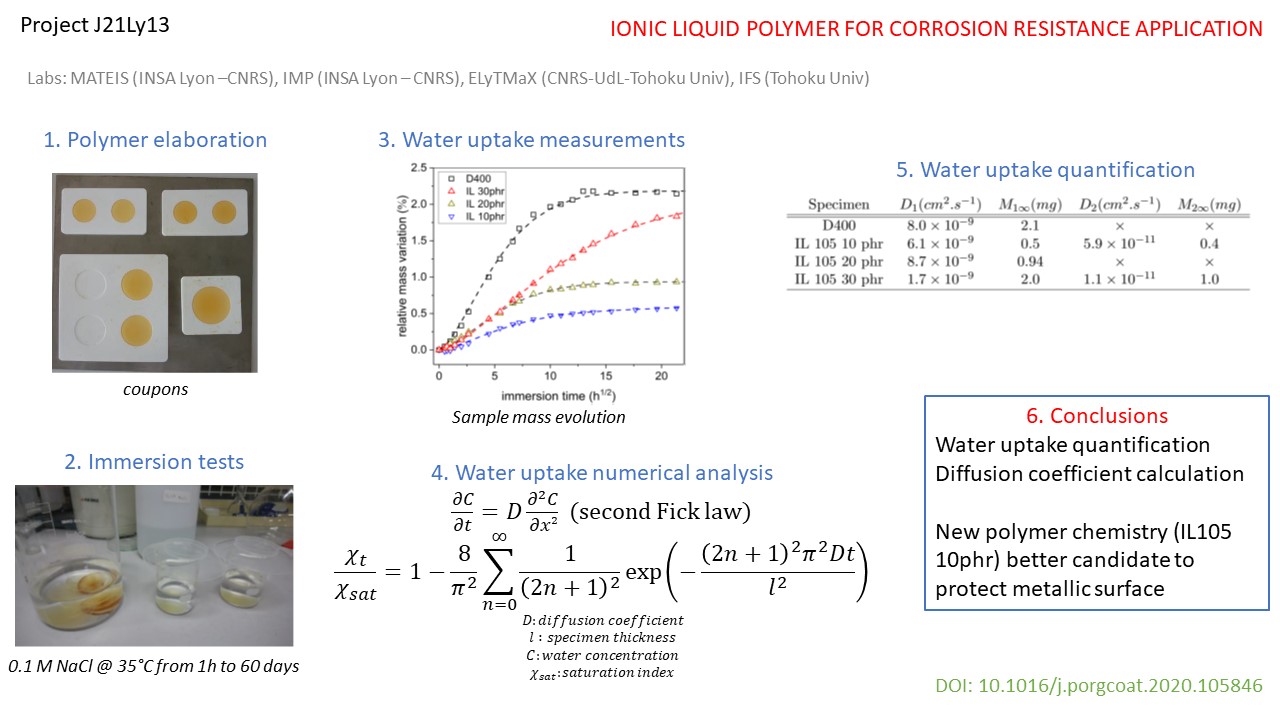
-
MACASH (MAgnetostrictive Composites for Application in Sensing and Harvesting)
Hiroki KURITA
Graduate School of Environmental Studies, Tohoku UniversityThis study reports on the successful fabrication of a material made up of Fe49Co49V2 alloy particles dispersed in a polyurethane (PU) matrix (PU–FeCoV); this material was used to make soft magnetic composite sheets with a positive magnetostriction effect.
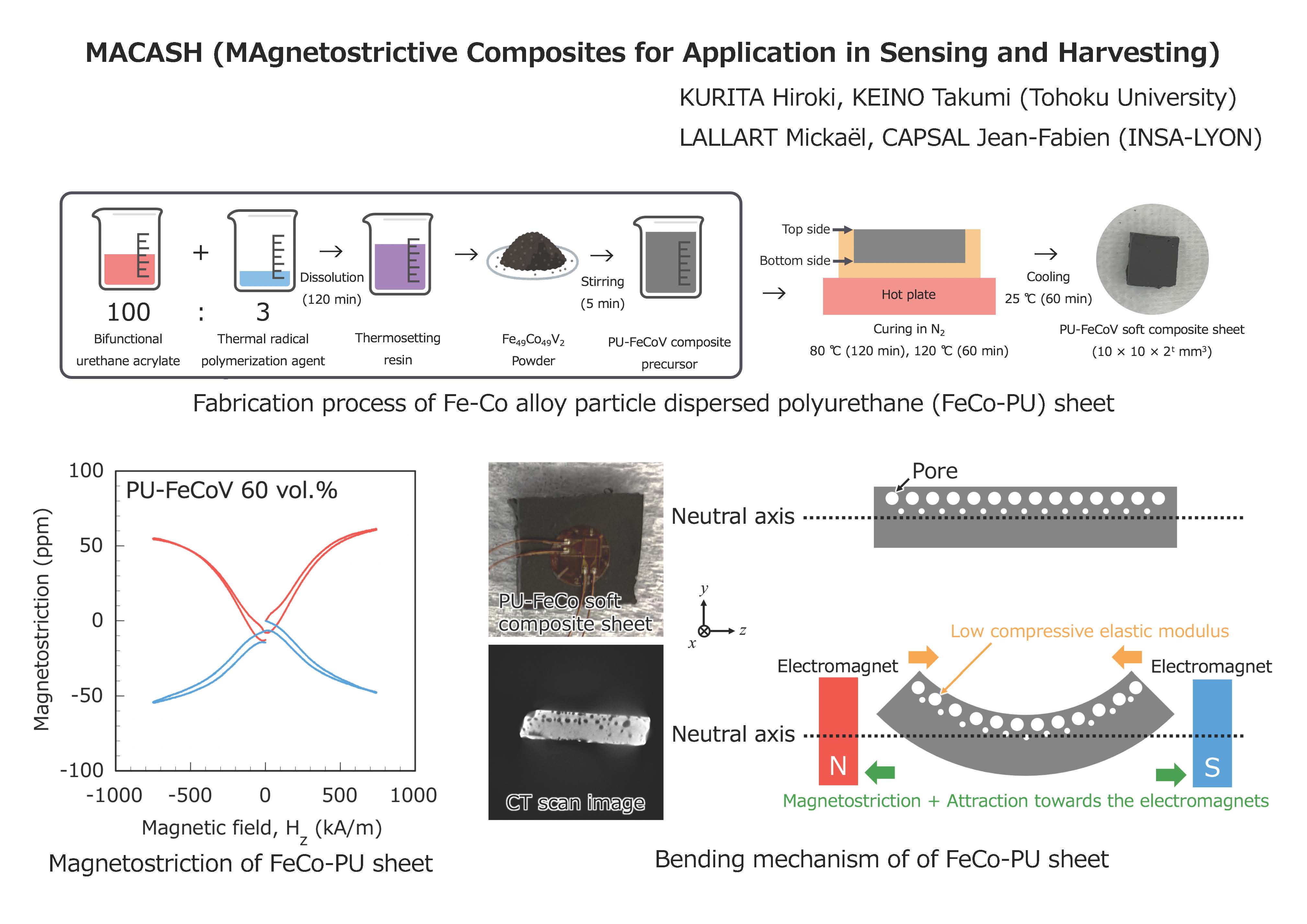
-
3D simulations of skyrmion instability and mechanism of magnetostriction
Fumitake KATO
National Institute of Technology, Ibaraki CollegeWe numerically study skyrmion stability/instability under uni-axial stresses using the Finsler geometry modeling technique, where a new degree of freedom for strains is introduced. In the simulations, compressive or tensile stress is applied perpendicular to a 3D thin disk, enforcing Dzyaloshinskii-Moriya interaction (DMI) to be direction-dependent. We found that the direction-dependent DMI stabilizes or destabilizes the skyrmions.
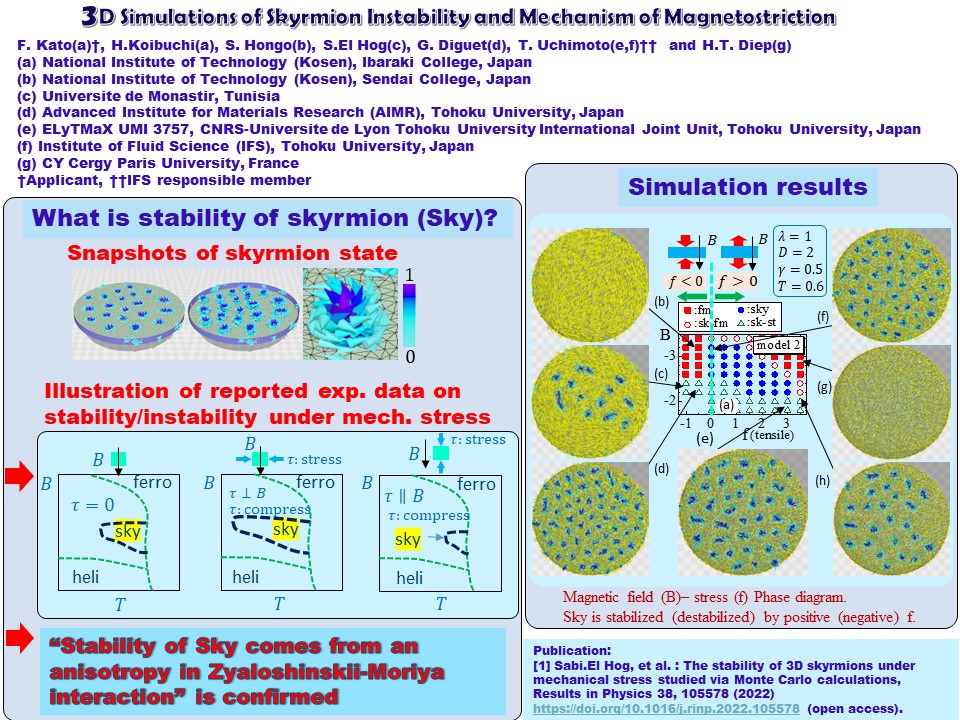
-
Investigation of a predictive therapeutic response under controlled oxygen condition in cancer patient-derived organoids
Nicolas AZNAR
University Claude Bernard Lyon 1Using a novel integrative approach that couples innovative ex vivo organoid culture system as well as cutting edge microfluidic technologies, this project will help understand how O2 therapy could impact cancer cell plasticity and therefore improve efficacy of conventional chemotherapy. Thus, contributing to enhance human disease modeling and paving the way for more pertinent drug screening.
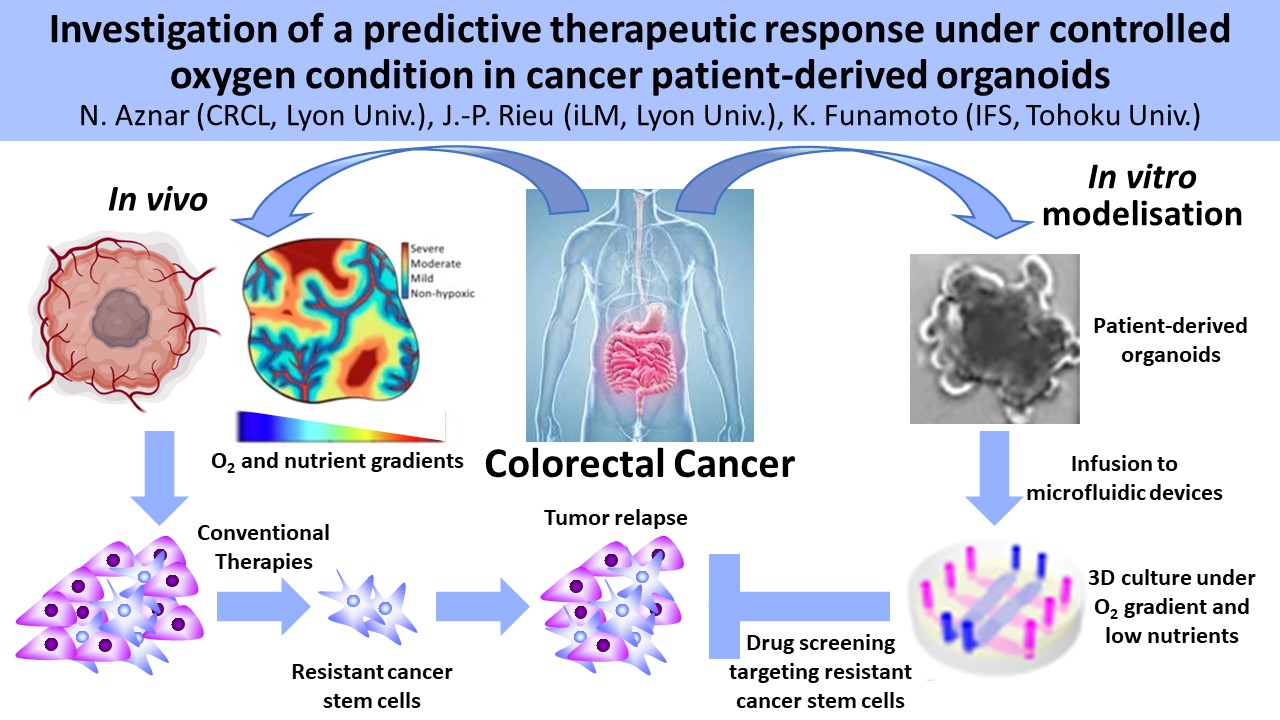
-
Experimental and Numerical Approaches for Water Film and Particle Flow Analyses(and its Particle Deposition Behavior) for Repairing Leakage Pipes by Cold SprayProcess (or Solid-State Particle Impingement Process)
Chrystelle BERNARD
Frontier Research Institute for Interdisciplinary Sciences, Tohoku UniversityPipe leakage is a severe problem for the safe operation of thermal and nuclear power plants. The cold spray technique was shown to be effective in repairing a water-leaking pipe in this study. According to the simulation results, the hard particle in the mixing feedstock could improve the coating/substrate bonding strength through an in-situ shot-peening effect. Furthermore, the impact simulation with water film revealed that the water film only influences the initial stage of impact. Furthermore, the particle could overcome the water's hindering effect during impact.
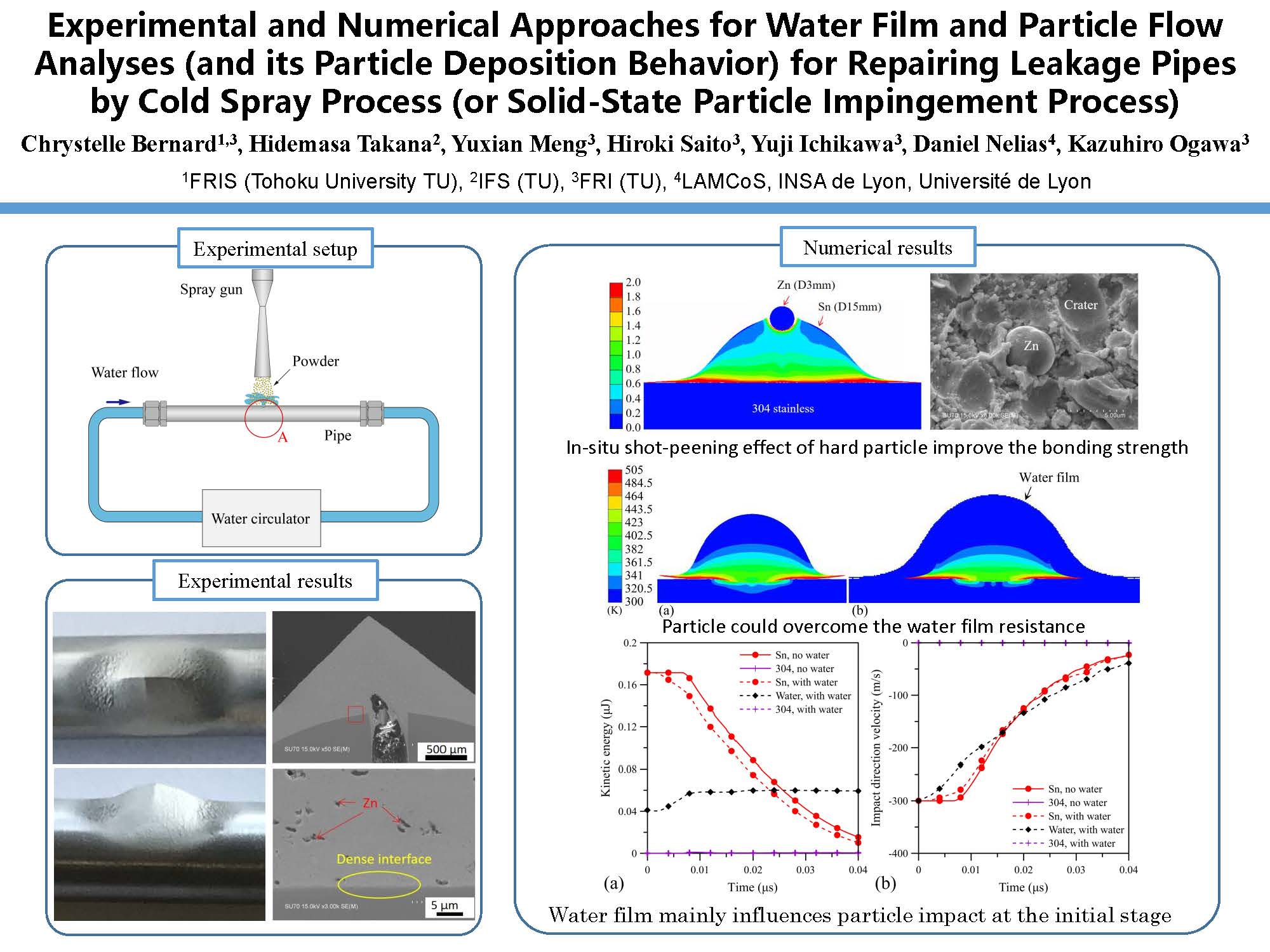
-
Theory for Electrostriction of PolymeRic Actuator (TEmPuRA)
Gildas COATIVY
INSA LyonThe objective of this collaborative work is to better understand the impact of charge carriers on the electromechanical response of elastomers. The results are summarized below:
•The long-term kinetics of polyurethane bending has been highlighted.
•A simulation with comsol multiphysics based on the presence of two types of charge carriers of opposite signs with different mobilities was used to reproduce the observed kinetics.
•The accumulation of charge carriers near the electrodes could be involved in the bending and electrostriction of polyurethane.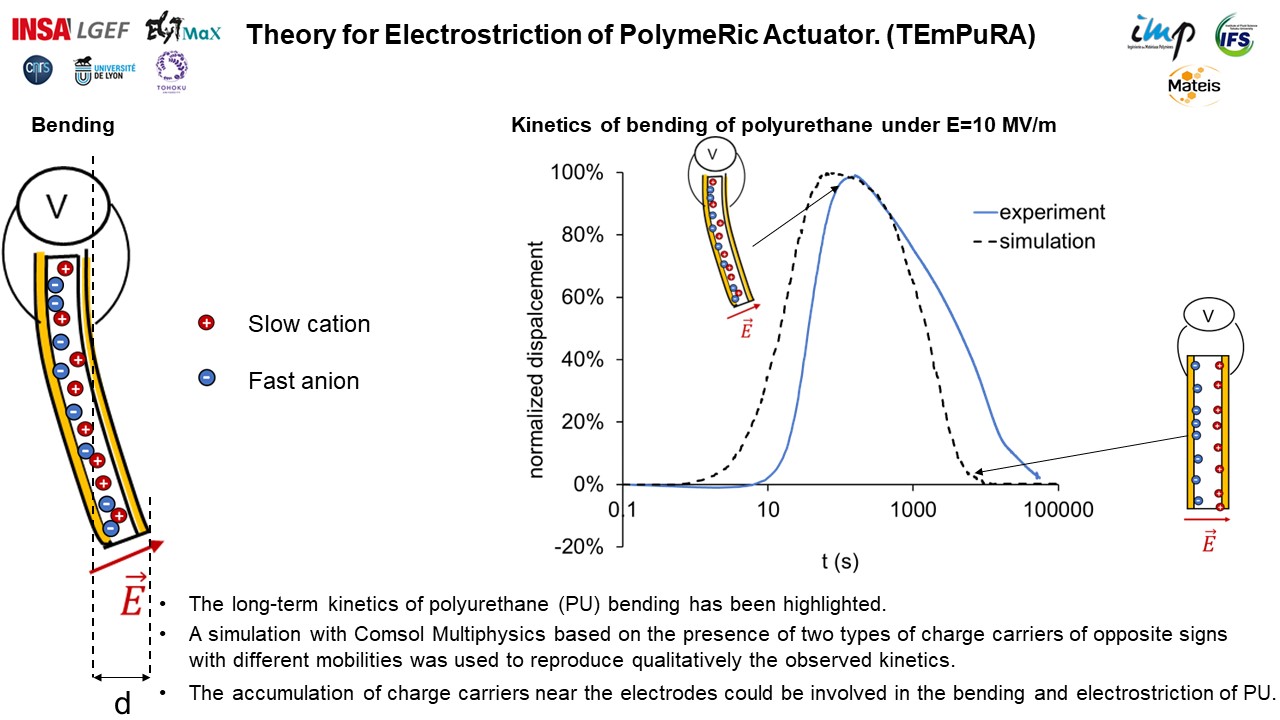
-
Modal approach for extracting flow structure related to the subsonic jet noisegeneration
Aiko YAKENO
Institute of Fluid Science, Tohoku UniversityThe objective of this project is to clarify the mechanism of jet noise generation by combining numerical simulation and modal decomposition. First, we applied the mode decomposition method to the time series of free jet simulation data computed by Prof. Bogey and tried to extract the fluid structures involved in the noise generation. As a result, the structure of pressure waves propagating upstream from the end of the potential core was found. This flow structure oscillates at a frequency equivalent to that of the K-H instability that triggers turbulence in the wake. This result supports the "feedback loop phenomenon" (Bogey (2021)) in which sound waves from the wake induce the K-H instability in a free jet, and is a step forward toward clarifying the mechanism of jet noise generation.
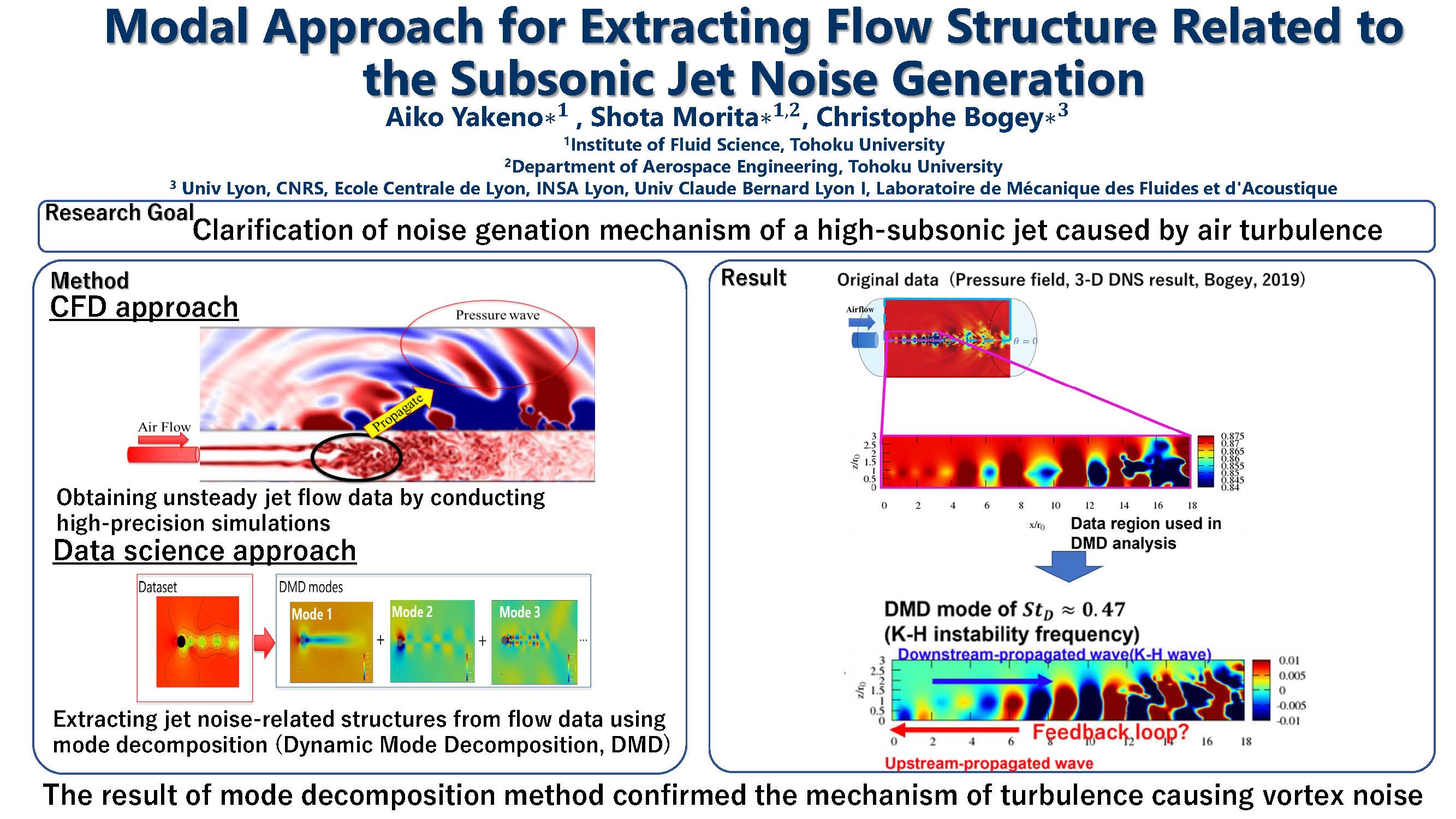
-
Corrosion characterization for pipe wall by ultrasonic wave
Hiroyuki NAKAMOTO
Kobe UniversityThe reflection on an ultrasonic beam at normal incidence on a rough surface leads to attenuation due to the scattering of the wavefront. This study revealed the difference between simulated periodic roughnesses and realistic random roughnesses. The simulated roughnesses attenuated the ultrasonic wave at specific frequencies.
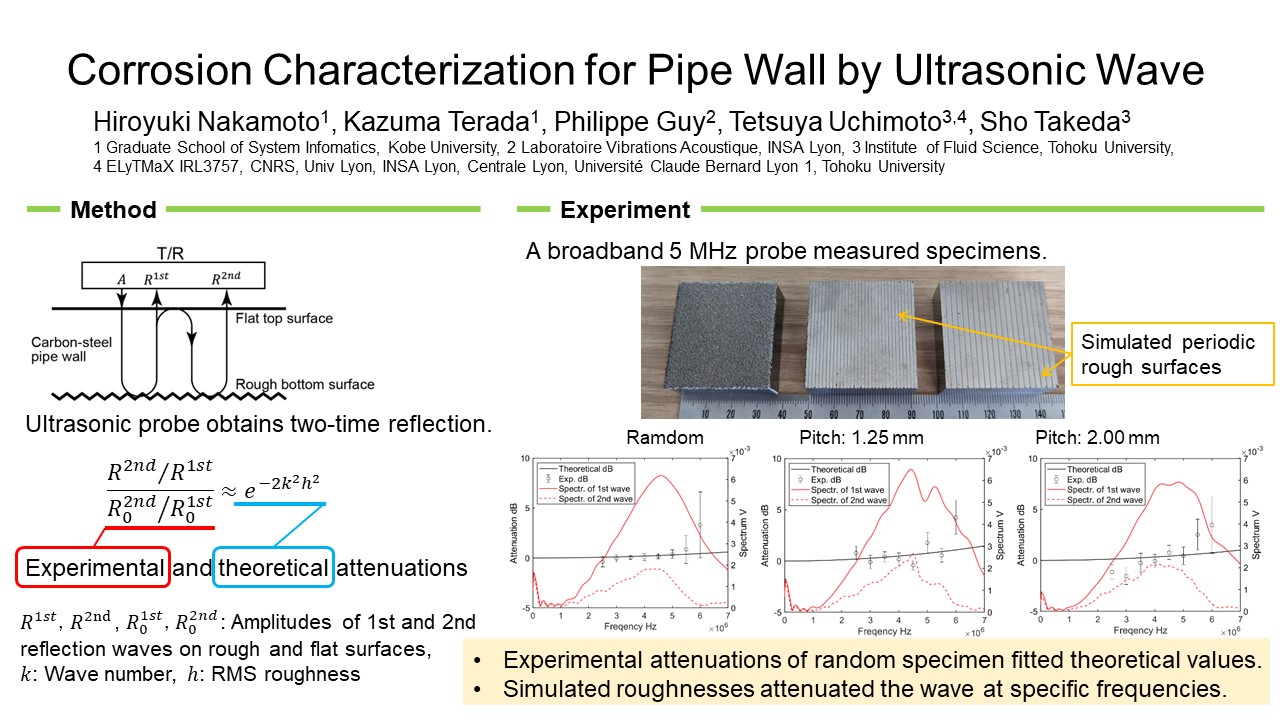
-
High impact resistance of titanium/UHMWPE composites coatings by cold spray
Hidemasa TAKANA
Institute of Fluid Science, Tohoku UniversityThe polymer powder exhibits a slight memory effect which is important in cold spray perspective as the time spent over the melting point should be very little and then the microstructure obtained should probably keep the memory of the nascent one.
In figure 1 one can see on the DSC analyses performed for two UHMWPE grades (GUR 4130 with 3,9Mg/mol and GUR 4170 with 10,5 Mg/mol) the shift of the crystallization after a first melting followed (or not) by an annealing of an hour and half. In the particular case of cold spray this effect could be beneficial as we observe an earlier crystallization without annealing which means that the material is easier to crystallize. As a consequence, this could ease the co-crystallization of neighboring powder grains.